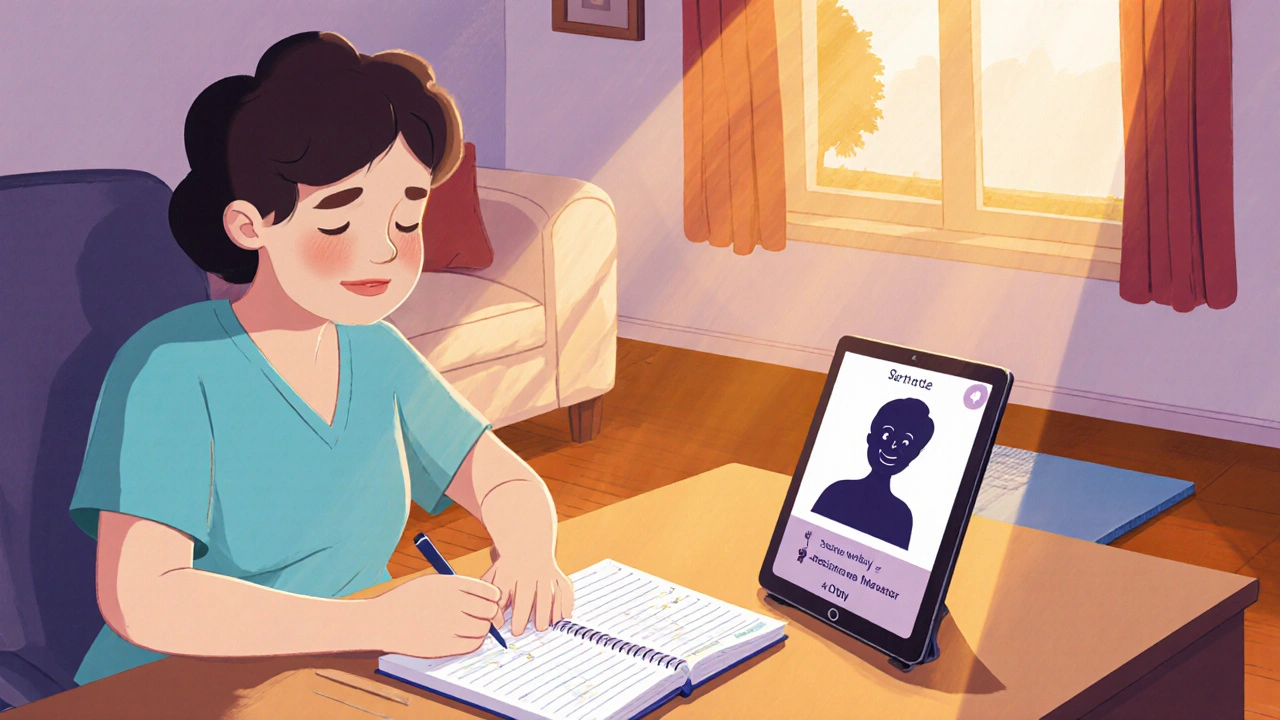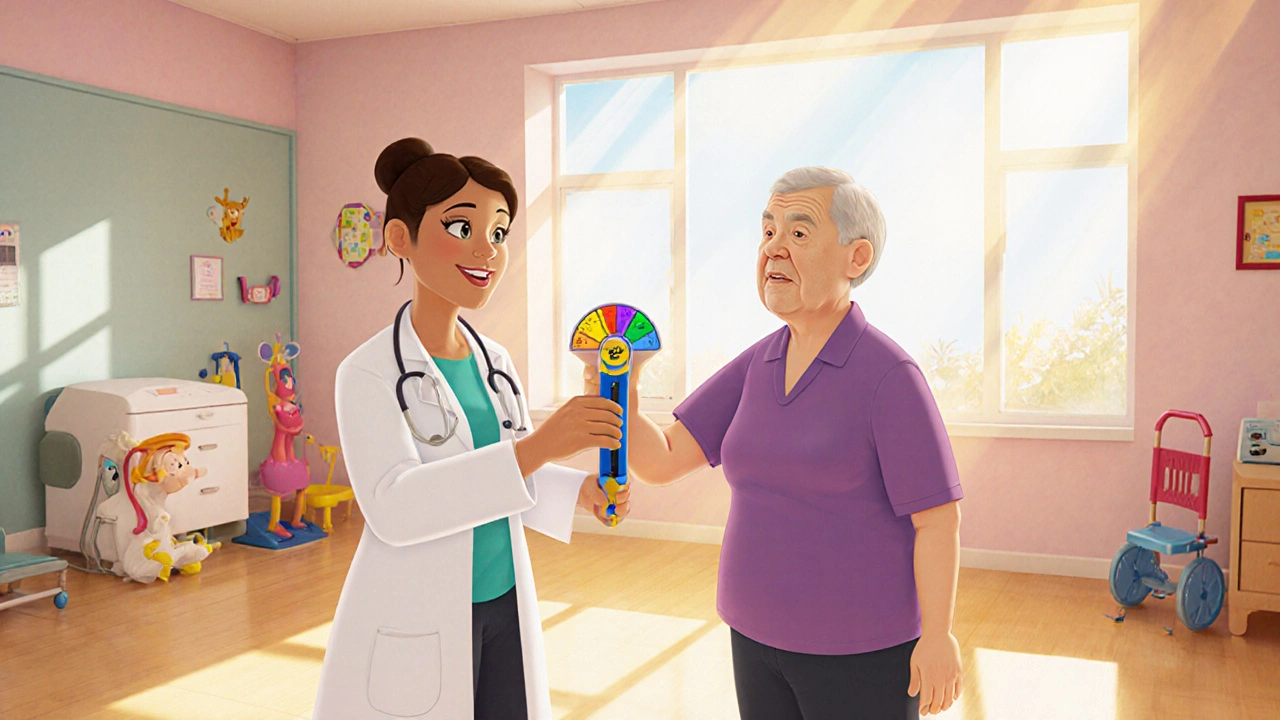Arthritis Progress Tracker
Weekly Improvements
Living with arthritis often feels like a constant battle against stiffness, pain, and loss of independence. While medication can calm the flare‑ups, the real game‑changer is a well‑structured physical therapy program that restores movement and reduces discomfort. Below you’ll discover why physical therapy for arthritis works, the specific techniques you can try, and how to keep the momentum going.
Why Physical Therapy Matters for Arthritis
Physical therapy isn’t just a set of exercises; it’s a science‑backed approach that targets the root causes of joint pain. Arthritis is a group of conditions causing inflammation, pain, and reduced motion in the joints. Whether you have osteoarthritis - the wear‑and‑tear form that usually affects knees, hips, and hands - or rheumatoid arthritis, an autoimmune disease that attacks joint linings - the goal is the same: keep joints moving without hurting.
A qualified physical therapist a licensed health professional who designs and guides therapeutic exercise programs evaluates your range of motion, muscle strength, and functional goals. From there, they craft a plan that improves joint stability, reduces swelling, and teaches you how to move safely in daily life.
Core Physical Therapy Techniques for Joint Health
Not all exercises are equal. Physical therapists focus on modalities that directly address the deficits arthritis creates. Below is a quick snapshot of the most common approaches.
| Modality | Primary Goal | Typical Session Length |
|---|---|---|
| Range of Motion (ROM) Exercises | Restore joint flexibility | 10‑15minutes |
| Strength Training | Build muscular support around the joint | 20‑30minutes |
| Aquatic Therapy | Reduce load while moving | 30‑45minutes |
| Manual Joint Mobilization | Decrease stiffness, improve glide | 5‑10minutes |
| Balance & Proprioception Drills | Prevent falls, improve coordination | 10‑15minutes |
Range of motion exercises controlled movements that keep the joint capsule pliable are usually the first step. Gentle flexion and extension in pain‑free ranges keep cartilage nourished and discourage scar tissue formation. Next, strength training targeted resistance work that fortifies muscles surrounding the joint is introduced. Even light weights or resistance bands can make a huge difference in knee or hand stability.
For people whose body weight makes land‑based work painful, aquatic therapy exercise performed in warm water that reduces joint loading offers an excellent alternative. The buoyancy supports the limb while the water’s resistance still provides a solid workout.
Manual joint mobilization, performed by the therapist, helps break up adhesions and gently coax the joint back into a smoother glide. Finally, balance drills using foam pads or single‑leg stands sharpen proprioception, a sense often dulled by chronic pain.
Designing a Personal Physical Therapy Plan
Every arthritis journey is unique, so a one‑size‑fits‑all prescription rarely works. Here’s a step‑by‑step blueprint you can adapt.
- Schedule an initial evaluation with a licensed physical therapist.
- Discuss your specific pain locations, daily activities, and any previous surgeries.
- Allow the therapist to measure your baseline range of motion the degrees through which you can move a joint and strength levels.
- Set realistic, measurable goals - for example, “walk 15 minutes without pain” or “open a jar without discomfort.”
- Agree on a schedule: most people start with 1‑2 sessions per week for 4‑6 weeks, then transition to a home‑based routine.
- Receive a written home‑exercise booklet that includes illustrated ROM, strengthening, and flexibility moves.
- Track progress using a simple pain‑scale journal (0=no pain, 10=worst imaginable). Update the therapist every two weeks.
Consistency beats intensity. Even 10‑minute daily sessions can beat a once‑a‑week marathon. The therapist’s role evolves from hands‑on guidance to coaching you on proper form and self‑management.

Managing Pain and Inflammation with Physical Therapy
Physical therapy doesn’t magically erase inflammation, but it can dramatically lessen its impact. Warm‑up activities raise blood flow, delivering nutrients that help clear inflammatory mediators. Post‑exercise cool‑downs and gentle stretching encourage the body’s natural anti‑inflammatory response.
Some therapists integrate modalities like low‑level ultrasound or electrical stimulation, which have modest evidence for reducing swelling. More commonly, they teach you self‑massage techniques using a foam roller or tennis ball to break up tight fascia - a practical way to keep daily stiffness at bay.
Don’t forget the role of weight management. Even a 5‑percent reduction in body weight can cut knee‑joint load by up to 20percent, easing pain during weight‑bearing activities. Pair your PT plan with modest dietary tweaks, and you’ll notice a synergy that amplifies results.
Tracking Progress and Staying Motivated
Seeing improvement fuels adherence. Use these low‑tech tools to visualize gains:
- Joint angle diary: Record the degrees you can bend a knee or elbow each week.
- Strength log: Note the resistance (e.g., 2kg band, 5lb dumbbell) you can handle for each exercise.
- Pain‑scale chart: Track daily pain scores before and after exercises.
Celebrate milestones - like walking an extra block or gripping a coffee mug without cramping. If progress stalls, talk to your therapist; they may adjust the intensity, swap a modality, or add a new “challenge” exercise.
When to Combine Physical Therapy with Other Treatments
Physical therapy works best alongside a comprehensive arthritis strategy. Here’s when you might need additional support:
- Severe flare‑ups: Short courses of non‑steroidal anti‑inflammatory drugs (NSAIDs) can make PT sessions tolerable.
- Joint injections: Corticosteroid or hyaluronic acid shots can reduce swelling, allowing you to perform stronger exercises sooner.
- Surgical considerations: Pre‑hab (pre‑surgery PT) improves outcomes after joint replacement.
Never view PT as a stand‑alone miracle; think of it as the engine that powers the rest of your treatment plan.

Common Pitfalls and Pro Tips
Even motivated patients can trip up. Avoid these mistakes:
- Skipping warm‑ups: Jumping straight into high‑intensity moves can aggravate inflamed joints.
- Overdoing it: More isn’t always better. Pain that lasts beyond 24hours signals you’ve pushed too hard.
- Ignoring form: Bad technique forces other muscles to compensate, leading to new aches.
- Neglecting rest days: Muscles need time to rebuild; schedule at least one recovery day per week.
Pro tip: Use a mirror or record yourself on a phone to check alignment. Small adjustments-like keeping the knee aligned with the ankle during squats-make a huge difference over weeks.
Key Takeaways
- Physical therapy targets the underlying causes of arthritis pain by improving joint mobility, strength, and balance.
- Core modalities include ROM exercises, strength training, aquatic therapy, manual mobilization, and proprioception drills.
- A personalized plan starts with a professional evaluation, realistic goals, and a structured home‑exercise routine.
- Track joint angles, resistance levels, and pain scores to stay motivated and adjust as needed.
- Combine PT with medication, injections, or surgery when needed for a rounded approach.
Frequently Asked Questions
How often should I attend physical therapy sessions for arthritis?
Most clinicians recommend 1‑2 supervised sessions per week for the first 4‑6 weeks, followed by a home‑exercise program. Frequency can decrease as you gain confidence and pain lessens.
Is aquatic therapy safe for people with severe knee arthritis?
Yes. The buoyancy of warm water reduces joint loading by up to 50percent, allowing smooth movement without the pounding impact of land‑based exercises. Always check water temperature (ideally 30‑33°C) and discuss any contraindications with your therapist.
Can I do physical therapy on my own without a therapist?
Self‑managed programs work once you have a solid foundation taught by a professional. Starting without guidance risks poor form and aggravation. Schedule at least one initial assessment, then follow a therapist‑approved home routine.
What are the signs that I’m over‑exerting during PT?
If pain spikes above a 5 on a 0‑10 scale and lasts more than a day, if swelling increases, or if you feel joint instability, you’re likely over‑doing it. Scale back intensity, add rest, and inform your therapist.
Will physical therapy delay the need for joint replacement surgery?
Research shows that patients who engage in regular PT often postpone surgery by several years, as improved strength and mobility reduce functional limitations. However, PT cannot reverse severe joint damage, so surgery may still be necessary eventually.






Written by Martha Elena
I'm a pharmaceutical research writer focused on drug safety and pharmacology. I support formulary and pharmacovigilance teams with literature reviews and real‑world evidence analyses. In my off-hours, I write evidence-based articles on medication use, disease management, and dietary supplements. My goal is to turn complex research into clear, practical insights for everyday readers.
All posts: Martha Elena